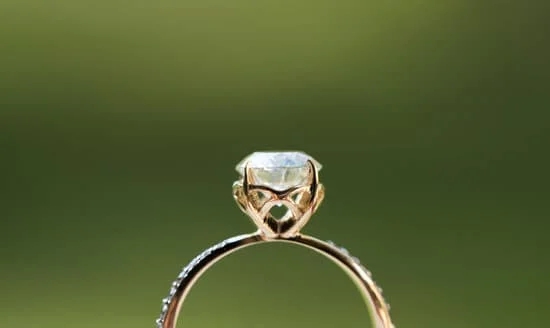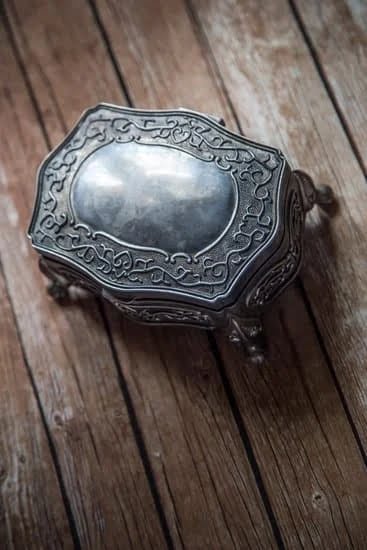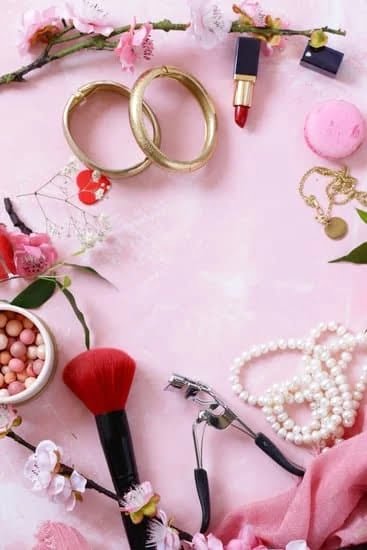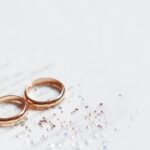Authenticity is paramount when it comes to diamond purchases. The allure of these precious gemstones lies not only in their beauty but also in their rarity and value. However, what happens when the diamond you thought was genuine turns out to be counterfeit? Can you take legal action against the jewelry store that sold it to you? In this article, we will explore the topic: Can you sue a jewelry store for selling fake diamonds?
Understanding the basics of identifying a fake diamond is essential in determining whether or not you have been deceived. The four Cs – carat, cut, clarity, and color – are key factors that can help differentiate real diamonds from imitations. We will delve into these aspects and discuss common signs of fake diamonds to look out for.
But what are your legal options if you discover that the diamond you purchased is indeed counterfeit? We will examine consumer protection laws regarding jewelry purchases and explain potential legal actions that can be taken against jewelry stores selling fake diamonds. Gathering evidence and documentation to support your case becomes crucial during this process.
If you find yourself in this unfortunate situation, consultation with a lawyer specializing in jewelry fraud cases may be necessary. We will explore indicators that may suggest a viable case against a jewelry store, while also discussing the statute of limitations for filing lawsuits and potential damages or compensation if successful.
Stay tuned as we guide you through the steps involved in suing a jewelry store, alternative dispute resolution methods such as mediation or arbitration, and real-life examples of successful lawsuits against jewelers. Lastly, we emphasize the importance of seeking legal advice if you suspect you have purchased a fake diamond and the role consumer rights play in ensuring authenticity.
Understanding the basics
Overview of the 4Cs
When it comes to identifying a fake diamond, understanding the basics of diamond grading is crucial. The 4Cs – carat, cut, clarity, and color – are universally recognized as the standard for assessing diamonds’ quality and authenticity. Familiarizing yourself with these characteristics can help you determine whether a diamond is genuine or counterfeit.
Carat refers to a diamond’s weight and size, with one carat equivalent to 200 milligrams. Keep in mind that while larger diamonds are often more valuable, the carat weight alone does not guarantee authenticity. Cut refers to how well a diamond has been faceted and shaped; real diamonds showcase brilliance and sparkle due to precise cutting angles and proportions.
Clarity refers to the presence of imperfections or inclusions within a diamond. Real diamonds typically have minor natural flaws that can only be seen under magnification, while fake stones may appear perfect or contain obvious blemishes. Lastly, color grading assesses a diamond’s hue on a scale from D (colorless) to Z (yellow tint). Genuine diamonds exhibit varying shades of white or yellow, depending on their grade.
Key differences between real and fake diamonds
Counterfeit diamonds can often mimic some visual aspects of genuine diamonds at first glance. However, several key differences can aid in distinguishing between real and fake stones. One notable distinction is the brilliance or sparkle exhibited by authentic diamonds due to their ability to effectively reflect light. Counterfeit stones may lack this luster and appear duller in comparison.
Another characteristic to consider is hardness. Diamonds are known for being one of the hardest substances on earth, while fake stones made from materials like cubic zirconia or moissanite have relatively lesser durability. This means that genuine diamonds should not easily scratch or chip when in contact with harder surfaces.
Furthermore, it is worth noting that real diamonds exhibit a unique heat conductivity property. This characteristic allows diamonds to disperse heat quickly, making them feel icy cold when touched. In contrast, fake stones may have a glass-like temperature and feel warmer to the touch.
Common signs of fake diamonds to look out for
While some counterfeit diamonds can closely resemble their authentic counterparts, there are several common signs that may indicate a stone’s inauthenticity. One such sign is an unusually low price. Diamonds are valuable gemstones, and if a deal seems too good to be true, it may suggest that the diamond is not genuine.
Additionally, pay attention to inconsistencies in the diamond’s weight and size. Fake stones may often deviate from typical carat weights or dimensions seen in real diamonds. Visible flaws or irregularities within the stone can also indicate that it may not be genuine.
Moreover, if you notice air bubbles or rainbow-colored reflections within the stone under magnification, it could be an indicator that you have a fake diamond on your hands. Authentic diamonds do not exhibit these characteristics.
By understanding these basics and being aware of the key differences and common signs of fake diamonds, you can better equip yourself in identifying whether a diamond purchased from a jewelry store is genuine or counterfeit. If you suspect that you have been sold a fake diamond, it is essential to know your legal rights and options for recourse against the jewelry store responsible.
Consumer rights
When it comes to purchasing diamonds, authenticity is of utmost importance. Diamonds are not only a symbol of love and commitment but also a significant financial investment. If you suspect that you have purchased a fake diamond from a jewelry store, it is crucial to understand your legal options and consumer rights in order to seek recourse.
Consumer protection laws exist to safeguard buyers from fraudulent practices, including the sale of fake diamonds. These laws may vary by jurisdiction, so it is essential to familiarize yourself with the specific regulations in your area. In many cases, if a jewelry store knowingly sells a fake diamond or misrepresents its authenticity, they can be held legally responsible for their actions.
If you find yourself in this unfortunate situation, there are potential legal actions that you can take against the jewelry store that sold you the fake diamond. This may include filing a lawsuit for fraud or misrepresentation, breach of contract, or violating consumer protection laws. However, it is crucial to gather evidence and documentation to support your case.
To build a solid case against the jewelry store, collecting evidence becomes vital. Start by documenting any conversations or interactions with the seller regarding the diamond’s authenticity. It is also advisable to consult with professional appraisers and gemologists who can analyze the diamond and provide an expert opinion on its authenticity.
Maintaining proof of purchase and receipts is equally important as they serve as evidence of your transaction and can help establish a timeline of events.
Understanding your legal options also involves knowing when it is appropriate to consult with a lawyer and potentially pursue legal action. Some indicators that you may have a viable case against a jewelry store include substantial evidence supporting fraud or misrepresentation and significant financial losses as a result of purchasing the fake diamond. It is important to note that there are typically statutes of limitations for filing lawsuits related to fraudulent sales, so timely action is crucial.
By being aware of your consumer rights and legal options, you can take the necessary steps to protect yourself if you suspect you have purchased a fake diamond. Seeking legal advice and pursuing appropriate legal actions will not only help you seek justice but also emphasize the significance of authenticity and hold jewelry stores accountable for their practices.
Building a solid case
When dealing with the purchase of a fake diamond from a jewelry store, building a solid case is crucial to seek justice and potentially receive compensation. Collecting evidence that supports your claim is essential in establishing the authenticity of your purchase and holding the jewelry store accountable for their actions.
In this section, we will discuss the steps you can take to document and preserve evidence, the role of professional appraisers and gemologists, as well as the importance of maintaining proof of purchase.
The first step in building a solid case is to meticulously document and preserve all evidence relating to your purchase. This includes any receipts, certificates, or appraisal documents that were provided by the jewelry store.
It is important to gather these documents as they serve as proof of purchase and can aid in establishing the terms of sale agreed upon by both parties. Additionally, take clear and detailed photographs of the diamond itself, capturing its size, shape, color, and any distinguishing characteristics that may help determine its authenticity.
To further support your claim, consult with professional appraisers or gemologists who specialize in diamonds. These experts possess extensive knowledge on diamonds and can provide an unbiased evaluation of your stone. Their assessment can serve as valuable evidence in proving whether the diamond is genuine or fake. Be sure to choose reputable professionals who are recognized within the industry and hold certifications from reputable organizations such as Gemological Institute of America (GIA) or American Gem Society (AGS).
Maintaining proof of purchase is another critical aspect when building a solid case against a jewelry store selling fake diamonds. Alongside receipts and documentation previously mentioned, it is beneficial to keep records such as bank statements or credit card statements showing the transaction between you and the jewelry store. These records ensure a clear paper trail connecting you to your purchase while reinforcing your claim regarding what was represented at the time of sale.
By meticulously collecting evidence through documentation, consulting professionals, and maintaining proof of purchase, you can bolster your case against a jewelry store selling fake diamonds. In the next section, we will discuss when it is appropriate to consider legal action and the factors to consider before proceeding with a lawsuit.
Consultation with a lawyer
When you suspect that you have purchased a fake diamond from a jewelry store, it may be necessary to consult with a lawyer and consider legal action. While not every case may warrant a lawsuit, there are certain indicators that can help determine whether pursuing legal recourse is appropriate. Understanding when to consider legal action and consulting with a lawyer can provide valuable guidance and insight into your options.
One important indicator that may justify legal action is if you have substantial evidence supporting the fact that the jewelry store knowingly sold you a fake diamond. This evidence could include documentation such as certificates of authenticity or receipts stating that the diamond is genuine. Additionally, if you had the diamond independently appraised and it was determined to be fake, this can also strengthen your case.
Another consideration is the statute of limitations for filing a lawsuit. Each jurisdiction has its own time limit within which a lawsuit must be filed. It’s crucial to be aware of these deadlines as failing to file within the specified timeframe could result in your case being dismissed.
Ultimately, consulting with a lawyer who specializes in jewelry fraud cases can help you understand the strength of your case and assess potential damages and compensation if successful. They will review the evidence you have gathered, analyze applicable consumer protection laws, and advise you on whether pursuing legal action is advisable.
If it is determined that pursuing legal action is appropriate, your lawyer will guide you through the process, including filing the lawsuit, gathering additional evidence if necessary, negotiating with the opposing party or their attorneys, and potentially representing you in court. Hiring an experienced attorney in jewelry fraud cases is critical as they possess specific knowledge and expertise in this field.
By seeking consultation with a lawyer at an early stage, you can gain clarity on whether filing a lawsuit is warranted and explore other potential avenues for resolution such as mediation or arbitration. With proper legal guidance and representation, you can navigate the complex process of suing a jewelry store for selling fake diamonds effectively.
| Consultation with a lawyer: When to consider legal action |
|---|
| – If you have substantial evidence that the jewelry store knowingly sold a fake diamond |
| – Understanding the statute of limitations for filing a lawsuit |
| – Importance of consulting with a lawyer specializing in jewelry fraud cases |
The legal process
When faced with the unfortunate situation of purchasing a fake diamond from a jewelry store, you may be wondering what your legal options are. This section will provide an overview of the steps involved in suing a jewelry store and what you can expect during the legal process.
- Find a reputable attorney specializing in jewelry fraud cases: It is crucial to enlist the help of a qualified attorney who has experience handling cases involving jewelry store fraud. They will guide you through the entire process, advise you on the best course of action, and increase your chances of success.
- Filing a lawsuit: The first step in pursuing legal action is to file a lawsuit against the jewelry store. Your attorney will prepare all necessary documentation, including a complaint outlining your allegations and any damages suffered as a result. This complaint will be filed with the appropriate court, usually at either the federal or state level.
- Pre-trial procedures: Once your lawsuit has been filed, both parties will engage in pre-trial procedures that include discovery, where each side gathers evidence and information relevant to the case. Interrogatories (written questions), document requests, and depositions may also be conducted during this phase.
- Settlement negotiations: In many cases, before going to trial, both parties may attempt to reach a settlement to avoid prolonged litigation. This can involve negotiation between your attorney and the defendant’s counsel or participating in mediation or arbitration (as discussed in Section 7).
- Trial: If no settlement is reached or if it is determined that alternative dispute resolution methods are not suitable for your case, it will proceed to trial. During this stage, evidence will be presented, witnesses may testify, and both sides will have an opportunity to present their arguments.
- Verdict and potential appeals: After hearing all evidence presented at trial, it is up to the judge or jury to make a decision. If they find in your favor, the defendant may be ordered to provide compensation for your damages. However, either party has the right to appeal the verdict if they believe legal errors occurred during the trial.
While this overview provides a general understanding of what to expect when suing a jewelry store for selling fake diamonds, it is important to consult with an attorney who can offer personalized advice based on the specific details of your case.
Alternative dispute resolution
Alternative dispute resolution, such as mediation or arbitration, can be a viable option for resolving disputes with a jewelry store over the sale of fake diamonds. This section will provide an overview of these alternative methods and discuss their advantages and disadvantages.
Overview of alternative methods
One alternative way to resolve a dispute with a jewelry store is through mediation. Mediation involves the presence of a neutral third-party mediator who facilitates communication between the parties involved. The mediator assists in finding common ground and helping to reach a mutually agreeable solution. Mediation can be less formal than litigation and allows both parties to have more control over the outcome.
Another alternative method is arbitration, which involves the appointment of an arbitrator who acts like a judge. Arbitration proceedings are more formal than mediation and generally follow certain rules and procedures. The decision made by the arbitrator is binding on both parties, although it may be subject to limited appeal.
Advantages and disadvantages
Mediation offers several advantages in resolving disputes involving fake diamonds. It allows the disputing parties to have more control over determining the outcome and potentially preserving their business relationship with the jewelry store. Mediation can also be faster and less costly than going through the court system.
On the other hand, arbitration provides a forum where disputes can be resolved more formally, similar to litigation but without going to court. It provides a definite conclusion to the dispute, as the arbitrator’s decision is typically binding on both parties. However, arbitration may involve higher costs compared to mediation due to fees associated with hiring an arbitrator.
Ultimately, whether mediation or arbitration is suitable for resolving your dispute with a jewelry store selling fake diamonds will depend on your specific circumstances and goals. Consulting with an attorney experienced in alternative dispute resolution can help you determine which option is best suited for your particular case.
By exploring alternatives like mediation or arbitration before resorting to litigation, individuals who suspect they have purchased fake diamonds from a jewelry store may be able to resolve their disputes more efficiently and cost-effectively.
Case studies
In recent years, there have been several notable cases where individuals were able to successfully sue jewelry stores for selling fake diamonds. These cases serve as valuable examples of what can be achieved through legal action and provide insight into the strategies employed and compensation received.
One such case involved a consumer who purchased what she believed to be a genuine diamond engagement ring from a reputable jewelry store. However, upon having the ring independently appraised, it was revealed that the center stone was actually a high-quality cubic zirconia. The consumer decided to take legal action against the jewelry store for selling her a fake diamond.
In court, the consumer presented evidence of her purchase, which included receipts and documentation indicating that she had specifically requested a diamond ring. Additionally, she had obtained an appraisal report from a certified gemologist confirming the fraudulent nature of the stone. The jury ultimately ruled in favor of the consumer and awarded her full reimbursement for the cost of the ring, as well as additional damages for emotional distress.
Another noteworthy case involved a group of consumers who discovered that a well-known chain jewelry store had been consistently misrepresenting its diamonds as being of higher quality than they actually were. Through their lawsuit, these consumers were able to bring attention to widespread deceptive practices within the company, prompting other affected individuals to join in filing similar claims.
In this case, the consumers were represented by an experienced attorney specializing in jewelry fraud cases who helped gather substantial evidence supporting their claims. This evidence included expert testimonies from gemologists and industry professionals who confirmed that the diamonds sold by the jewelry store did not meet the advertised standards. As a result of their collective efforts, the consumers received compensation for their purchases and brought about significant changes in how diamond quality is assessed and marketed by jewelry retailers.
These real-life examples demonstrate that it is possible to hold jewelry stores accountable for selling fake diamonds through legal means. By gathering strong evidence and seeking the guidance of knowledgeable attorneys, consumers have been able to secure compensation for their losses and raise awareness about unethical practices within the industry.
If you suspect that you have been sold a fake diamond, consulting with a lawyer who specializes in jewelry fraud can provide you with valuable insights and help you determine if pursuing legal action is the right course of action for you.
Conclusion and key takeaways
In conclusion, the purchase of a fake diamond from a jewelry store can be a frustrating and disappointing experience. However, it is important to remember that you have legal options available to you if you suspect that you have been sold a counterfeit stone. Understanding the basics of diamond authenticity and consumer rights is crucial in building a solid case against the jewelry store.
Firstly, knowing how to identify a fake diamond is essential in gathering evidence to support your claim. Familiarize yourself with the 4Cs – carat, cut, clarity, and color – as they play a significant role in determining the authenticity of a diamond. Additionally, being aware of common signs of fake diamonds will help strengthen your case. Collecting evidence such as proof of purchase, receipts, and documentation from professional appraisers or gemologists will further support your claim.
Consulting with a lawyer experienced in jewelry fraud cases is advisable when considering legal action against a jewelry store. They will be able to assess your situation and provide guidance on whether you have a viable case. It is important to understand the statute of limitations for filing a lawsuit and seek legal advice promptly if necessary. Exploring potential damages and compensation that may be available if successful is also an important consideration.
Ultimately, the key takeaway from this article is the importance of authenticity when purchasing diamonds and understanding your consumer rights. Whether through mediation or arbitration outside of court or pursuing legal action through the legal process, seeking resolution for being sold fake diamonds is possible. Encouraging readers to seek legal advice if they suspect they have purchased a fake diamond underscores the significance of protecting consumer rights in such transactions.
Frequently Asked Questions
Is it a crime to sell fake jewelry?
Selling fake jewelry can be considered a crime, depending on the intent and circumstances surrounding the act. In many jurisdictions, it is illegal to knowingly sell counterfeit or fake goods, including fake jewelry, as this deception may defraud consumers.
The sale of counterfeit items undermines the integrity of legitimate businesses and can lead to financial losses for both individuals and companies. Penalties for selling fake jewelry vary by jurisdiction but commonly include fines and potential imprisonment.
Are synthetic diamonds illegal?
Synthetic diamonds are not illegal; in fact, they have gained popularity in recent years as an alternative to natural diamonds. Synthetic diamonds are created using advanced technology to replicate the properties and appearance of natural diamonds.
These lab-grown diamonds possess similar structural characteristics to mined diamonds but are created in controlled environments rather than being extracted from the earth. Synthetic diamonds are distinguishable from natural ones based on different factors such as their price, origin, and specific growth patterns visible under specialized equipment.
Do Zales sell fake diamonds?
As a reputable jewelry retailer established since 1924, Zales has built its reputation on selling genuine and high-quality diamonds. Zales prides itself on offering authentic diamond jewelry that has undergone rigorous certification processes to ensure its authenticity and integrity.
While Zales does not sell fake or counterfeit diamonds through its officially recognized channels, it is crucial for customers to exercise caution when purchasing from third-party sellers or online platforms claiming affiliation with Zales. It is always advisable to verify the credentials of any seller before making a significant purchase like diamond jewelry to ensure its authenticity and quality.

Welcome to my jewelry blog! My name is Sarah and I am the owner of this blog.
I love making jewelry and sharing my creations with others.
So whether you’re someone who loves wearing jewelry yourself or simply enjoys learning about it, be sure to check out my blog for insightful posts on everything related to this exciting topic!





